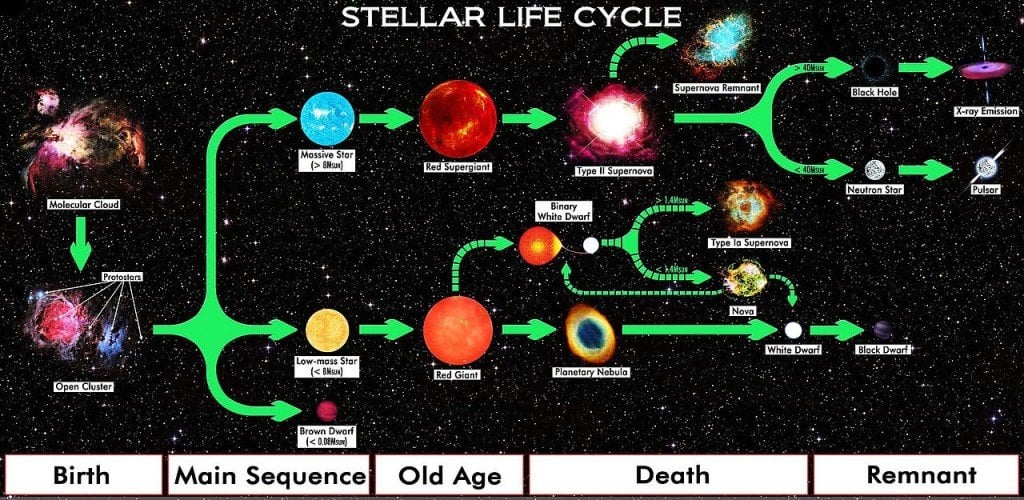

A star begins on the main sequence, burning hydrogen to helium. The basic evolution of a star is relatively well understood. They are the final events in the lives of stars more massive than ap- proximately 8 solar masses (8 M ⊙ ). for 72 percent of all supernovae in a volume limited sample (Smartt et al. 5 M ⊙, while the maximum mass to give rise to a type-IIP supernova is around 16. A statistical analysis shows that the minimum mass for a star to explode in a supernova is around 7. However it is possible to place an upper limit on how luminous (and thus massive) the progenitor could have been and yet remain undetected For the IIP progenitors enough observations are available (20 detections and non-detections) to make some statements about the progenitor population, specif- ically the mass range of stars that gives rise to these supernovae. Other supernovae with available pre-explosion images have less conclusive detections and in many cases no progenitors have been detected. Both were found to have masses of 8 M ⊙, the predicted minimum mass for a supernova to occur (e.g. The two observations confirmed for the first time that the progenitors of the most common type of supernova were the expected red supergiants, as shown in Figure 1. Subsequently a firm progenitor detection was made for Supernova 2005cs (Maund et al. The star was remarkable in its normality (see Figure 4, Van Dyk et al.

The first progenitor discovered by HST was the red supergiant progenitor of Supernova 2003gd.
Fusion core shell star life cycle archive#
After HST was launched in 1990 its archive grew and so did the chance that a supernova would have a pre-explosion image. In the future this star will also explode but it is difficult to predict how the accretion will have affected the resulting future evolution. Unlike the extreme interaction of 1987A, material was transferred to the companion which increased in mass from 14 M ⊙ to 22 M ⊙, the remainder being lost from the system (Maund et al. After it became a red supergiant and its radius became similar to the orbital separation. Initially the progenitor was 15 M ⊙ but lost 10 M ⊙ of material. The binary companion is necessary because, without it, the exploding star would have retained much more hydrogen and have produced a type-IIP supernova. The blue companion star was found but the red supergiant had disappeared confirming that red supergiant star had exploded and a binary companion was present (Maund et al.

In 2004 the supernova had faded enough for its position to be observed by HST. The immediate suggestion put forward was that the progenitor was in a binary system and had a blue companion star. Pre-explosion images of the object were consistent with a red supergiant but there was excess blue flux (Aldering et al. The event was nearby in the galaxy M81, 12 million light-years away. The progenitor must have lost most, but not all, hydrogen from its envelope before core collapse. ( b ) Supernova 1993J Supernova 1993J started out as a type-IIb supernova. This was further evidence for the binary scenario and provided a method to determine that the merger occurred 20,000 years before the supernova (Morris & Podsiadlowski 2007). Analysis showed that these rings were formed, during the common-envelope phase of evolution, from material that was lost during the merger.


 0 kommentar(er)
0 kommentar(er)
